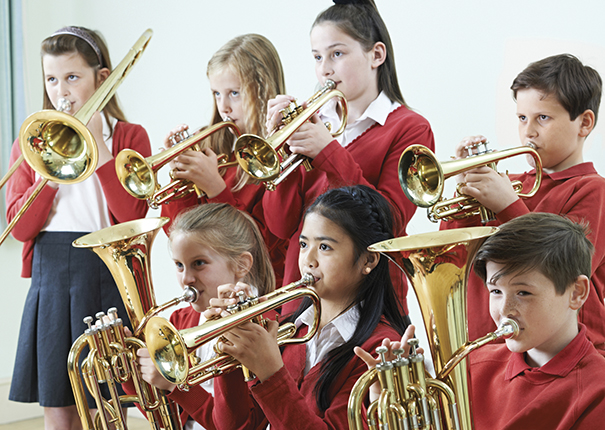The keen hearing of young musicians
DOI: 10.1063/PT.3.3990
Through varying tone, pitch, or both, the single-word remark “really” can convey surprise, skepticism, puzzlement, disapproval, or affirmation. Even when tone and pitch are not deliberately modulated, they help listeners interpret speech, especially above the din of multiple conversations. Given that tone and pitch are musical qualities, it’s perhaps not surprising that musicians have been found to be better than nonmusicians at hearing in distracting environments. Those initial studies of what is known as the musician effect were done on adults. Now Deniz Başkent of the University of Groningen in the Netherlands and her colleagues have investigated the effect in musicians and nonmusicians ages 11–14. The participants, all native Dutch speakers, were given three types of aural test, each with an adjustable level of background. In one, the participants were asked to identify melodic contours—that is, how a sequence of notes rises and falls in pitch. In another, they had to identify whether a nonsense word was spoken with joy, anger, relief, or sadness. And in the third, they had to recognize and repeat predesignated words in simple sentences (in Dutch) like “My neighbor has bought a new car.” Unlike the case for adults, the adolescents displayed no musician effect when identifying emotion or words. But the researchers did find a significant musician effect for melodic contours. What’s more, the advantage displayed by the young musicians persisted when the melodic contours were processed to resemble sound heard through a cochlear implant. That finding suggests that musical training could improve the hearing of children with cochlear implants. (D. Başkent et al., J. Acoust. Soc. Am. 143, EL311, 2018, doi:10.1121/1.5034489

HIGHWAYSTARZ-PHOTOGRAPHY/ISTOCK/THINKSTOCK

